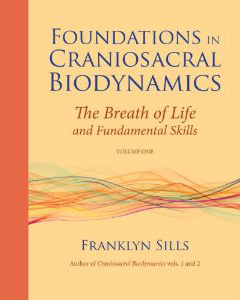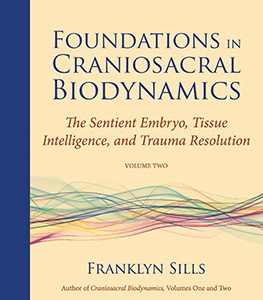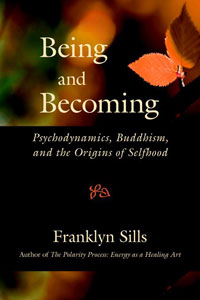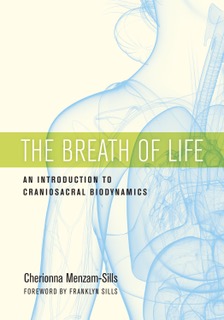Books by Franklyn Sills


Foundations in Craniosacral Biodynamics: Volumes 1 and 2
Order Volume One from Amazon.co.uk
Order Volume One from Amazon.com
Order Volume Two from Amazon.co.uk
Order Volume Two from Amazon.com
An energy medicine/somatic approach to well-being, biodynamic craniosacral therapy (BCST) is known for its gentleness and effectiveness in treating a variety of traumas and imbalances. BCST depends upon the practitioner’s ability to enter a state of presence oriented to the client’s inherent capacity to heal; training therefore involves learning profound perceptual and centering skills as well as the knowledge of anatomy, physiology, and primary respiration. In Foundations in Craniosacral Biodynamics, pioneering therapist Franklyn Sills offers students and practitioners a step-by-step guide to mastering the perceptual and clinical skills essential to a biodynamic approach. Drawing on developments in the field since the publication of his groundbreaking first textbook Craniosacral Biodynamics, Sills provides illuminating discussions of theory and practice and a wide range of exercises and explorations used in accredited training courses.
“In his latest volume Franklyn Sills gives us an eloquent guide to biodynamic cranial practice. I know of no other text that treats the subject with such depth and clarity, distilling the essence of this powerful therapeutic modality and placing it firmly in the domain of energy medicine. Drawing on sources as old as the Tao Te Ching, through classical psychology to contemporary physics, Franklyn explores the nature of therapeutic presence and its role in healing even our deepest wounds. This is a book with heart, illuminating the way of empathy and compassion: a gift for all practitioners of the healing arts.”
Katherine Ukleja, DO, BCST, international teacher of Craniosacral Biodynamics
“Foundations of Craniosacral Biodynamics quenches the thirst of any practitioner who yearns to go deeper in their understanding of the human condition and how the forces of the natural world can be employed in the therapeutic process. I thoroughly recommend this book and hope that it helps to relieve the suffering of many beings.”
Michael Kern, director of the Craniosacral Therapy Educational Trust in London and author of Wisdom in the Body: The Craniosacral Approach to Essential Health
Volume Two
Foundations in Craniosacral Therapy, Volume Two expands on the work described in the previous volume, starting with an overview of a biodynamic approach to craniosacral therapy, which emphasizes the suspensory nature of the human system. Here we review and deepen our understanding of the “three bodies”—the physical, fluid, and tidal bodies. We also review and expand upon the suspensory nature of the holistic shift—the physical body suspended in the fluid body, in turn suspended in the tidal body—within the context of the inherent treatment plan.
The following chapters of the book orient to our earliest life experiences—the embryonic period and the pre- and perinatal experience—with chapters devoted to birth, birth dynamics, and craniosacral approaches oriented both to birth trauma and to the tissue patterns it generates. Here we orient to the prenate and birthing infant as a sentient being having and responding to life experience. Further chapters orient to the primal/notochord midline and the tissue structures that form around it. We explore the dynamics of the pelvis, vertebral axis, cranial base, face and hard palate. Volume Two finishes with four important chapters on the neurophysiology of stress and trauma and related craniosacral and verbal skills. All chapters include appropriate biodynamic approaches to traumatization and CNS activation.
 Being and Becoming
Being and Becoming
BUY THE BOOK from Amazon.com
BUY THE BOOK from Amazon.co.uk
Franklyn Sills’ book “Being and Becoming” is an inquiry into the nature of being and selfhood. The book outlines an integrated paradigm with the aim of creating a comprehensive overview of the human condition – and to find ways to alleviate suffering. As we undertake an inquiry into the nature of suffering, we discover that the crux of the journey naturally orients us to the nature of the conditioned self and a search for deeper meaning. In essence, it brings us to the question, ‘What does it mean to be?’ This book initially inquires into the nature of being through the author’s interpretations of Martin Heidegger and Buddhist, Taoist, and Christian concepts. In this endeavor, the book delves into the nature of being as an innate state of sentience and presence.
It throws light on the development of selfhood by weaving together concepts from object relations theories, pre- and perinatal psychology, and Buddhist self-psychology.Object relations help define the structure and nature of self-systems while Buddhist psychology describes the self’s moment-to-moment cycling. The works of Fairbairn and Winnicott, along with insights from Daniel Stern, are discussed within the context of Lake’s pre- and perinatal psychology and Buddhist concepts. Fairbairn’s object relations is central to the discussion of selfhood as he maps out territories that are both straightforward and flexible to work with. Most importantly, his work is congruent with Buddhist self-psychology. “Being And Becoming” does not attempt to convey any of these thinkers’ ideas in a pure sense, but interprets and integrates their concepts in order to form a more cohesive paradigm of being and selfhood. The whole of the journey is explored within the context of Buddhist self-psychology, which holds a process-view of self that truly brings psychodynamics into the present moment of experience.

The Breath Of Life: An Introduction to Craniosacral Biodynamics
20 April 2018 by Cherionna Menzam-Sills